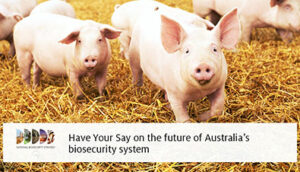Read the latest information on
Foot-and-mouth disease
Facing the challenges on the horizon with a shared purpose – that’s the goal of a National Biosecurity Strategy being developed by Australian, state and territory governments, industry, environment groups and the community.
The years ahead will potentially bring more risks to our food and fibre industries, and precious environments and places, in the form of pests and diseases. We already know about many of them, but many others will be new threats.
Having clear national priorities and actions, and working together, is the best way we can be ready for them. The National Biosecurity Strategy is on the way to being finalised, and your feedback will be valuable to help do this.
The consultation draft now released captures views heard to date about how the biosecurity system needs to evolve.
Your feedback will help shape the final version that will be presented to Australian ministers responsible for biosecurity later this year.It outlines priority areas and initial strategic actions for our biosecurity system, and includes questions to guide your comments, which will inform next steps.
Everyone who enjoys Australia’s food, fibre, and environment benefits from our biosecurity system. This strategy is for all Australians, so all views are invited.
Read the draft and give your feedback by 18 March 2022.
Find out more at haveyoursay.awe.gov.au/national-biosecurity-strategy.